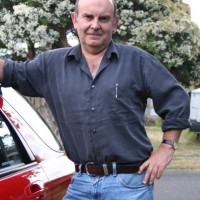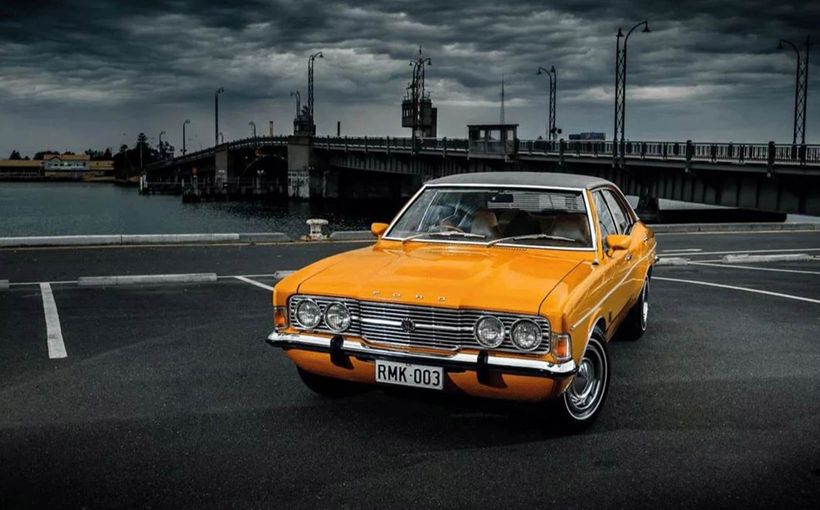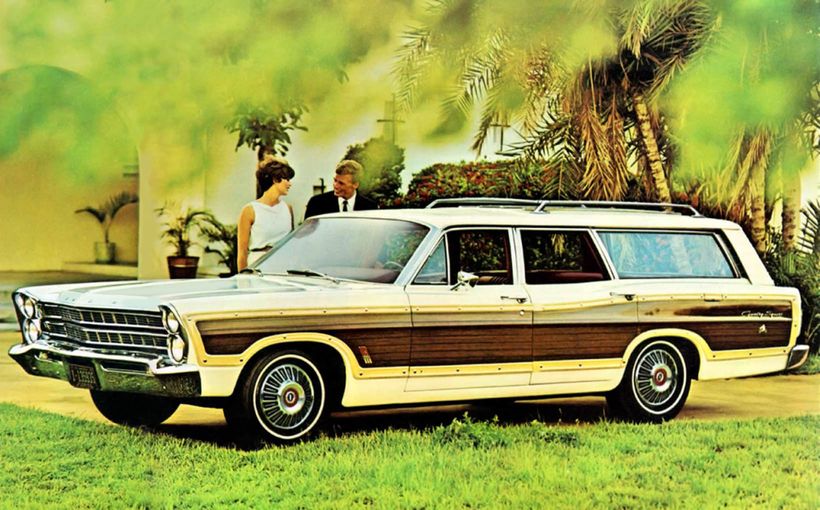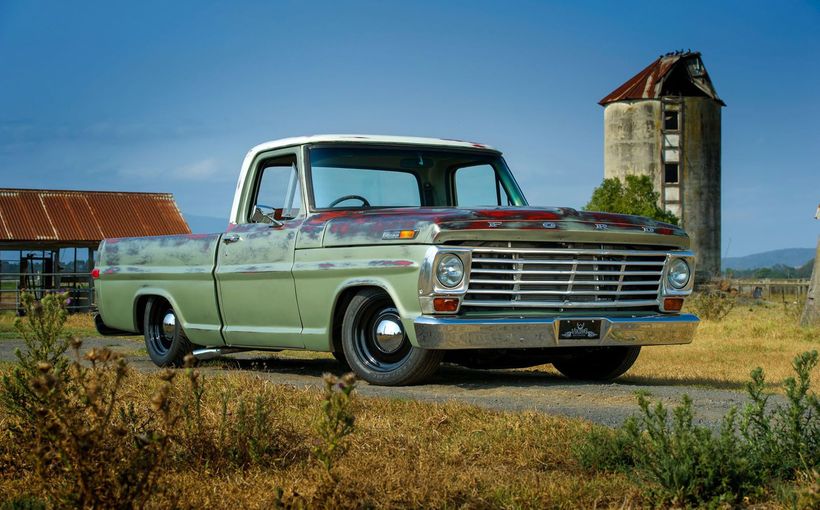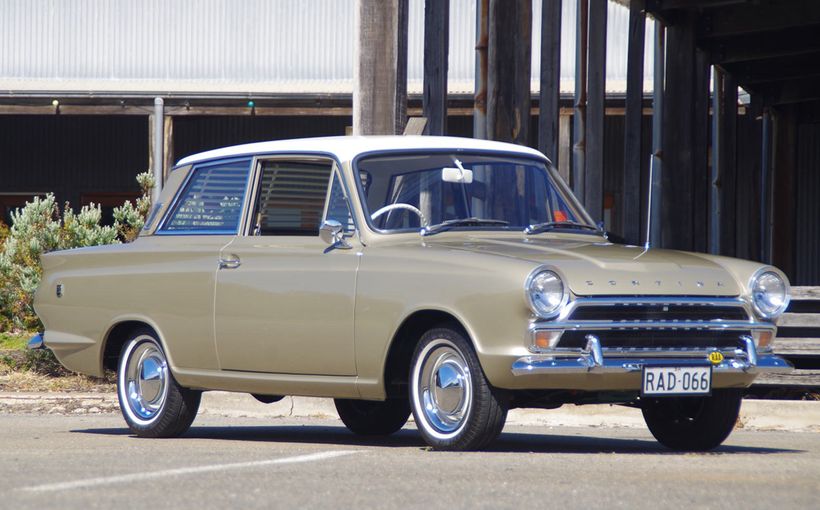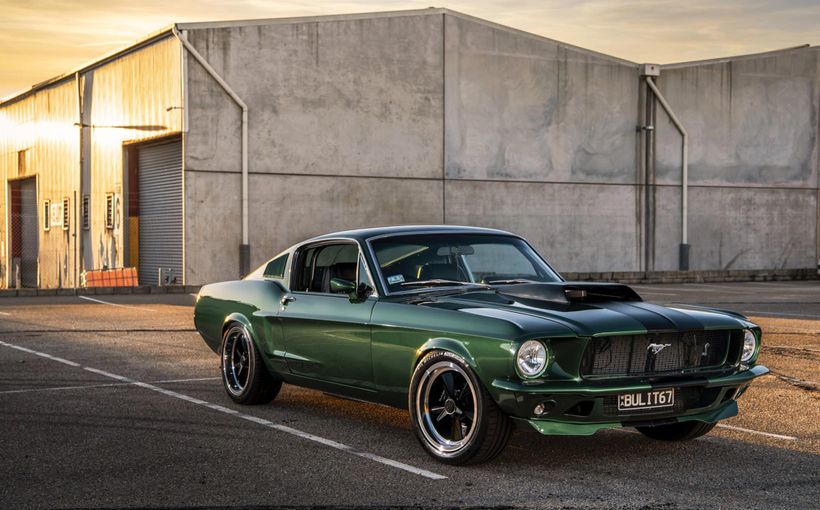1960-64 Ford XK-XL Falcon: Detroit’s Bird of Prey Crash Lands in Australia

The first Falcon’s clean and radical new shape captivated Australians on its September 1960 arrival with its simple lines and ground-breaking front styling where the headlights defined the grille and bonnet height. This particular car is often described as the very first Australian example but the wide front number plate recess and more generous ride height weren’t seen until the Falcon reached full local production.
The launch of the first Australian Ford Falcon on September 11, 1960 was the most significant development in the Australian industry after the 1948 release of the first Holden. It was the first serious threat to Holden’s stranglehold over the Australian market. Within a year, the new model’s reputation was in tatters. The question remains: how did the new US model’s problems get past Ford Australia?
After the new Ford leap-frogged Holden styling by up to five years and offered the first automatic transmission option in a locally manufactured car, the XK Falcon received a rapturous reception and sent Ford’s local sales and market share into overdrive. Even after the 1961 Credit Squeeze cut the overall market by a quarter, Ford still posted a further boost in market share.
As the new “Trim, Taut,Terrific” XL Falcon promised to address the early problems, Falcon sales took off again in 1962 helped along by an EJ Holden that still didn’t look as fresh and could not match either of the Falcon’s superior engines.

The original brochure generated expectations that couldn’t be met as the first Falcon on release was less Australian than a right hand drive version of the US car rushed into local production. Note the narrow number plate recess and lower ride height of the original US specification.
By the end of 1963, XL Falcon sales had stalled after an equally stylish EH Holden bettered both Falcon engines with the promise of proven Holden reliability and ruggedness. A new Chrysler Valiant had also established itself quickly without any of the negativity surrounding the Falcon. Then the Falcon hit even worse turbulence after it emerged the XL upgrade had failed to address nagging concerns that the Falcon was not up to the job in Australia.
So why did Ford Australia abandon its own local version of the proven Zephyr Mark II at the 11th hour even after tooling was well-advanced in several areas? What prompted Ford Australia to place itself under such intense pressure with an unproven US model?

The Thunderbird was the Falcon’s hero car reference point before the Mustang arrived. The Australian XL Falcon facelift, more so than the US equivalent, featured a grille with strong Thunderbird cues and C-pillars advertised as the Thunderbird roofline. (Photo from dreamgarage.com)
The XK-Thunderbird Project
As early as January 1956, Dearborn commenced its own small car program, about the same time Ford in Britain decided its four cylinder Consul version of the Zephyr needed to be a standalone model. Because the US car’s wheelbase was set at 90 inches, some 15 inches short of the current Holden, the program was of little relevance to Ford Australia.
At that point, the only option for Ford Australia was to develop its own version of the Zephyr Mk II. Once Ford had lifted the Zephyr’s local content to cut the price, Ford could exploit its longer wheelbase (107 inches) and bigger engine (2.6-litres) to generate extra volume. Because it was a heavier and more expensive car to build, the local Zephyr program was always marginal as it would have locked Ford Australia into higher costs that Holden could take advantage of at any time.

The British Consul Classic reflected the size and style of an early US compact car design study. Intended for a 1959 release, it was delayed until 1961 by which point it was dated and had to be scrapped within two years, a fate that would have destroyed Ford Australia had this car survived as a Falcon. (Photo from classics.honestjohnco.uk)
By August 1956, the small US Ford had grown to 69 inches wide and 186 inches long on a 102.5 inch wheelbase before it was pegged back to 172 inches long on a 102 inch wheelbase. Still of little use to Ford Australia, the August 1956 L’Avion concept was close enough to a new Consul for Colin Neale (the original designer of the Zephyr Mark II) at Ford UK to use it as a starting point for the standalone Ford Consul Classic.
This UK Ford, also slated for a 1959 release like the small US Ford, was a rival for the BMC Farina cars and the Vauxhall Victor but was delayed until 1961. Detroit’s later rejection of this size as too small highlights why the Australian six-cylinder Austin Freeway based on the BMC Farina Cambridge/Oxford could never be treated seriously as a six-seater family car rival to the Falcon or Holden.
Yet the Consul Classic was close to how the Falcon would have looked until several last minute changes in direction. It’s also why the XK Falcon also looked so different to the equally new Ford Anglia released in the 1959-60 timeframe.
As these early concepts were further developed by Ford’s Advanced Styling Studio, the program moved at the end of 1957 into the mainstream Ford Division for completion. It was so top-secret it was called “19XK Thunderbird” so employees and the public would believe it was a low-price Thunderbird.
This led to two distinct approaches with one featuring “tube” styling at both ends and the other with rear fins containing tail lights in the tips of the fins. Both concepts saw light of day; the first as a Falcon while the second inspired the 1960 Mercury Comet and the 1962 Zephyr Mark III.

Ford’s long term plans to fully manufacture the British Zephyr Mk II in Australia included a unique local wagon (left) already tooled-up for mainstream production. Totally different to the aftermarket sedan conversion offered to British buyers, it was an early casualty of the switch to the Falcon. (Photos from commons.wikimedia.org and onlycarspictures.com)
Dimensions were revised to 170 inches long and a 64 inch width on a 106 inch wheelbase. The stylists then boosted the width to 70 inches to make it a true six seater at which point the new car shadowed the Holden and was of interest to Ford Australia. By February 1958, the Advanced Studio concepts were lined up against the latest Ford efforts.
This is probably when Ford Australia management first saw how close the new model was evolving to both the Holden and Zephyr. It prompted an immediate review of Ford Australia’s Zephyr plans but according to some insiders it was not quite there yet.
It took until April 1958 before the final specification and style was approved at which point the new car was locked in with a wheelbase of 109.5 inches, a length of 180 inches and a width of 70 inches. The styling was refined to provide extra grille area for engine cooling and a more production-friendly junction between the windscreen and top of the A-pillars. (This final Falcon design represented a first for both the US and Australia after the depth of the entire front was defined by the headlights without a layer above the grille or below the bumper. Providing adequate airflow for engine cooling required a huge concave mesh grille that was arguably too much of a good thing. The way in which later Falcon grilles in the US and Australia addressed airflow requirements while disguising their large surface area makes a fascinating study)

Although the Falcon emerged as a cheap and disposable compact in the US, it was uncannily close to the current Holden in dimensions and seemed a better Australian family car than the ageing Zephyr originally slated for local manufacture. Yet the mill pond calmness in this happy scene would soon turn into a tidal wave and almost drown Ford Australia.
The new car’s name then had to be resolved quickly with some claiming that Ford just beat Chrysler in registering Falcon. Not true, according to the biography “Virgil Exner Visioneer” by Peter Grist. Chrysler had already presented its 1955 Falcon ideas car and transferred the name to its own small car program.
To maintain the Thunderbird connection, Henry Ford II approached Chrysler and asked if Ford could use the Falcon badge. Virgil Exner was consulted and his response was: “Well, I guess they do us some favours once in a while, and we do them some favours, so that’s OK.” According to Exner’s son, Exner had already wanted to name the Chrysler small car Valiant, after his favourite comic strip Prince Valiant.

This illustration appears to be the work of Lew Bandt, Ford’s talented inventor of the coupe utility and a savvy illustrator who could present his case. The Ranchero ute and sedan delivery in the US used the longer doors from the Falcon Tudor sedan and the extra overhang of the US wagon. Ford Australia not only cut costs dramatically by building all four bodies using Fordor sedan dimensions and parts but all were better suited to Australian conditions sharing the same shorter overhangs. (Photo from truckjungle.com)
A memo dated April 21, 1958, which decreed that Falcon was now the approved name and XK-Thunderbird was deleted, marked the birth of the new car. Sketches by Ford Australia’s Lew Bandt, which feature the final Falcon styling to highlight how local body production could be rationalized, are dated September 1958. This suggests the Australian decision to scrap the local Zephyr strategy for the US Falcon occurred between April and August 1958.
The rush was on for the US to get the Falcon to market by October 1959 and an even bigger rush for Ford Australia to replicate its entire manufacture for local sale in September 1960. It is little wonder that a few problems slipped under the radar as there were virtually no carry over parts.

The local XK Falcon wagon was striking as the extra depth of the wagon section better matched the XK’s imposing grille than the slender sedan rear. Compare the wide number plate recess of this car’s later Australian-made front bumper with the wagon in the original press shot above. (Photo from Five Starr Photos)
Ford Australia’s Rationale
In a rare interview, the late Sir Brian Inglis, who had the job of getting the XK Falcon into local manufacture, provided insights into the thinking at the time:
“We knew way back then the Zephyr as we knew it would no longer exist as it merged into a shared European model (the later Granada). The Zephyr engine was old, difficult to upgrade and would be replaced by a V6. Before we were shown the Falcon, all we could do was chase 90 per cent local content for the Zephyr and get the volumes to build our own Zephyr as soon as the British went down a different direction.
“The Falcon matched the Zephyr in configuration with more modern styling. The high design cost of the next generation Zephyr’s V6, independent rear end, all wheel disc brakes and other features would not allow us to compete against Holden on price. The choice was not easy as we were well down the track with a local Zephyr. Starting again placed us under enormous pressure to achieve much higher volumes. But the Falcon’s lower design cost was attractive and it had continuity.

The 1959 Tank Fairlane, upgraded locally with 1959 Canadian parts to keep it alive through 1960-61, was to originally share Ford showrooms with the old Zephyr Mk II. The XK Falcon offered the same cabin space at half the price and half the fuel consumption without the big overhangs and bulk. Ford’s problems started after rural buyers walked past this ageing Fairlane and snapped-up the fresh new Falcon as a bargain replacement for their old full-chassis V8 models and drove them accordingly.
“The Falcon was not only going to be around much longer (the Zephyr as Australians knew it did in fact end in 1965 but the British kept the Zephyr badge alive on the very different Mark IV V6 until the European Granada replaced it in 1972, about the same time as the US Falcon ended), there were suggestions, as early as 1956, that there would be an extended wheelbase model based on the Falcon, the Fairlane product. This in fact came to fruition in 1967. We then had to face the decision whether we could achieve the extra volume to justify the huge increase in investment.”
In a later interview about the Aussie Fairlane, Inglis suggested this became a more critical factor in choosing the Falcon after the US stopped building the 115.5inch wheelbase Customline after 1956. Although Ford Australia was able to get another two years out of the US 1955-56 series Ford Customline, the 1959 Ford Custom 300 and Fairlane 500 on their 118 inch wheelbases were too big and cumbersome for many Customline buyers.

The 1962 Zephyr Mk III arrived too late for Ford Australia to be its main family car contender with appealing but dated styling that combined the front of the first Falcon with the rear of the 1960 Mercury Comet. The British never facelifted this model which would have killed sales in Australia yet it was rushed into local assembly as a back-up while Falcon woes were addressed. (Photo from commons.wikimedia.org)
Once Ford rejected the Zephyr for the Falcon, the obvious question was why assemble the Zephyr Mark III. Inglis explains: “On the first day I returned from a year in Detroit in 1963, I was moved from Geelong to Plant Manager at Broadmeadows (aka Campbellfield). The paint shop was a disaster and my first job was to fix that up.
“I couldn’t believe the number of unsold XL Falcons, they stretched as far as the eye could see. We could no longer store them on the concrete apron. Each time it rained, they sunk further into the ground. It got so bad we even ran out of space at Broadmeadows and had to hire a firm to find hard ground. They found it at Fishermens Bend, opposite Holden, who could look out the window and see the trouble we were in. We had to succeed. I was told that day, if I didn’t fix the quality, I would be fired.
“Because we had decided to go with the Zephyr in 1956 we had already invested heavily in manufacturing it locally. As the Mark III had so many carryover parts from the Mark II, it made sense to keep building it as long as it was current in Britain. We had to sell something. (As part of this back-up strategy, the compact Fairlane was locally assembled during the same period).
“In retrospect, it was a miracle we got there at all. It was an amazing achievement. We had to do it all at once, new product, new assembly plant, new chassis plant, engineering centre, the lot. Skilled people were also hard to find. Over 100 Canadian and US families came out to help us get started. Broadmeadows, which was built for local Zephyr production in 1959, was too small to build the Falcon volumes we needed, even before it opened.

Building the entire Falcon engine in Australia allowed Ford Australia to respond to rapid market changes and stay ahead of its Holden rival while keeping the powerful Valiant in sight. The same facility and machinery from this era would then build an evolving range of unique local inline sixes from 1970 until the last.
“Early suspension problems were embarrassing but were quickly over as soon as we fitted the Fairlane parts. The real issue was that Australian demands for robustness in taxis and over rural roads were never contemplated in the US. That robustness was something we had to learn quickly and correct dramatically which meant we didn’t cover the design cost as early as we would have liked.
“We decided to stay with the original Falcon, which by fluke was so close to Holden in all the main areas, and upgrade it, including our engines, virtually every year until we could afford to tool up for the bigger US Falcon in 1966.”
Inglis later conceded that one of the biggest factors in exposing the early Falcon’s weaknesses was the loss of the Customline. The Falcon was heavily promoted in Australia and the US as offering the same cabin space as the 1959 Custom 300/Fairlane 500 range. Canny rural buyers concluded they didn’t need to buy the big full-chassis V8 models any more if the Falcon did the same job. According to Inglis, they drove the Falcon just as hard as the Customlines over the same roads.

Without the pioneering stress analysis that went into the first Cortina and Valiant structures, the first Falcon body was little more than a shell minus a chassis with minimal box sections to carry the heavy bits. Although adequate for most US applications, it forced Ford Australia into a race against time to add “torque-boxes” to replicate the strength of a full chassis.
Ian Vaughan, retired Ford engineer and executive and competitor in the 1968 London to Sydney Marathon, started work at Ford Australia in 1964. He concurs with the Inglis assessment. Vaughan notes that smaller Fords in those days were driven in regional centres but not much beyond. For the really rough work, Ford buyers would choose the full-chassis US models.
After Ford US had deleted the chassis in the Falcon’s light unitary body, Ford Australia had to effectively put it back by progressively adding “Torque-Box” sections as soon as it became apparent that buyers were treating the Falcon as a substitute for the full-chassis models.
Under new Managing Director Wallace Booth, Vaughan recalls Booth’s measured and steady drive to improve quality and keep internal morale up as market share continued to slip. Booth is credited with rejecting the 1964 US facelift as he felt it was not suitable for Australia then concentrated instead on improving quality. It was also Booth who brought Bill Bourke out with him as his assistant, another far-sighted move.

Although the first Falcon was built in Australia in June, almost three months ahead of release, it took a while longer for local parts to totally replace their US counterparts. Note the imported US bumper on this car with its narrow numberplate recess and the missing brightwork that would later identify a standard Falcon.
Local Production History
Early Falcon owners and parts specialists suggest that Ford brought out close to 200 early Falcons from the US before they were built here, converted them then used them for a wide variety of purposes before selling them on to the general public. Several of these cars appear in press and training material with early 1960 number plates, long before the first local Falcon came down the line.
They were quite different in detail. Their batteries remained on our driver’s side (in Australian cars it was moved to the passenger’s side), they had different ID, there were fewer vents in the panels inside the engine bay and the US horn centre was red with a Falcon emblem compared to the black local centre. These imports all had bumpers with the narrow centre numberplate recess which forced Australian number plates to hang below the bumper so they would clear the upper lip of the recess. However, these bumpers were also seen on the very first Australian-built cars until the local bumper with its much wider numberplate recess went into local production.

Reversing this photo of the US Falcon-based Ranchero (left) highlights how its longer doors pushed more of the load area behind the rear axle which in turn dictated a longer overhang not suited to Australian roads and tracks. The local ute’s shorter doors and cabin not only allowed more of the load to sit ahead of the rear axle, the rear overhangs were as short as the sedan’s. The settings for each photo highlight the difference in application.
The Australian wagon (as for the later ute and van which arrived in May 1961) was based on the sedan dimensions with shorter rear section and overhang. It differed from the Holden with its wind down rear tail gate glass and a back seat folding system that allowed the base of the rear seat cushion to flip over and add to the load area length instead of remaining upright against the front seat as on a Holden. However, the Falcon sedan’s generous boot capacity was compromised by the poor spare wheel placement compared to the Holden.

As the XL Falcon arrived in 1962, it was widely and incorrectly promoted as the US 1963 model released several months early specially for Australians. No more than a mild freshen-up of the 1960 model, it had a strong Thunderbird look at the front, perfect for 1962 but by 1963 it needed to look and feel more substantial against tough new rivals. (Photo from en.wikipedia.org)
Australian-built cars had a wide range of local componentry that generally shadowed the US items. The main external change over the US model was the integration of an amber indicator into the US Falcon’s all-red tail light. Although not always as visible as it could have been when the brake and tail light globes were glowing, it didn’t require add-on lights as other US models required.
At Deluxe level, Ford offered a choice of pleated vinyl or patterned nylon/rayon fabric inserts in the vinyl seats, a first for an Australian car at this level.
The options list was the most extensive ever seen on a local car including automatic transmission, heavy-duty suspension, fully padded dash, seat belts, padded sun visors, push-button transistor radio, Smiths fresh-air heater, a supplementary instrument panel and electric wipers.

Note the smaller tail lights on the XL Futura (right) dressed-up to look like the larger tail lights on the US 1963 model. Rear indicators also had to be amber in Australia whereas an all red tail light was still legal in the US. (Photo from barrett-jackson.com)
Factory accessories included power brakes, windscreen washers, choice of two wheel trim ring designs, two full wheel cover designs (Fiesta and Dyno), polished rocker cover mouldings, rear fender shields, front fender and hood ornaments, exterior mirrors and auxiliary driving and fog lights. Yet there was no bonnet lock and the 6.50x13 tyre option (with white or black walls) should really have been standard as the 6.00x13 standard tyre was too small.
The 144 engine (2365cc) was usefully larger than Holden’s (2262cc) and delivered 85bhp/63kW low comp or 90bhp/67kW high comp compared to Holden’s 75bhp/56kW. The Falcon engine had a spin-off oil filter as standard for extended oil changes, a big advance in 1960. Ford also cited the lack of engine side plates and an inlet manifold (the infamous ‘log’ manifold as it was later known) cast with the cylinder head as reducing the potential for leaks.
The Pursuit 170 was released later in the XK model life (from November 1961 production) following police requests for extra grunt (some say that a special tweaked version went to the police with an extra 5bhp) but it was quickly embraced as a performance option. Based on the Mercury Comet engine, its longer stroke delivered a 2.8-litre capacity, 101bhp/76kW and a big boost in torque. It featured a new oil filter design, a water-cooled automatic transmission, an improved manual with shorter second gear and a new carburettor and air-filter design.
The engine’s light weight (345lb/155kg compared to 525lb/236kg for Ford’s earlier big car six) contributed to the Falcon’s unusually light weight (2436lb/1096kg). And this is where the local Falcon’s problems started.
Ford eliminated the front cross-member (cited as an advantage for servicing but leaving the mechanicals highly exposed in Australian conditions) and instead built pressed-steel suspension towers in the engine bay to locate the springs and shockers that acted on the top wishbones. The Falcon did NOT have MacPherson strut front suspension like a Zephyr as often stated at the time.
The shock loads from the front end were then passed into the scuttle area via two braces, except in the early cars there was very little holding the scuttle area to the rest of the body. Compounding this was a too soft initial suspension spec with a ride height too low. Bottoming-out was a given in early test reports so it was no surprise that the upper ball-joint soon failed. The larger Fairlane-type ball joint, quickly retro-fitted, treated the symptoms, not the cause.
The stronger ball-joint highlighted weaknesses in other areas as did the heavy-duty suspension option. The race was on to extend the short front frame sections further under the body to make the body more resistant to bending and twisting around the scuttle area.
There were also issues with the steering. For the budget US buyer wanting the lightness of power steering, the Falcon’s unassisted steering came with over five turns lock to lock over a relatively large 38ft/11.4m turning circle. It was light but dangerously slow on Australian dirt roads if the tail stepped out.
Early gearboxes were also prone to failing and severe clutch shudder took several facelifts to eliminate. Again, these were all evident in early tests with Modern Motor having to complete its long distance test without second gear.
The local ute and van (sometimes referred to as the sedan delivery even locally), developed by Australians with an extra year up their sleeve, highlighted the attention that the rest of the range required: brakes were lifted from 114.3 to 150.4 sq ins swept area, five stud wheels with 6.70x13 tyres replaced the sedan’s 6.00x13 rubber on four stud rims, rear springs gained three extra assist leaves and the overall suspension was specially strengthened.
Thanks to Michael M. Murphy from Early Bird Restorations

Shots of the 1961, 1962 and 1963 US facelifts soon reveal that the local XL was little more than the US 1961 model with a slightly different grille, the 1962 rear pillars and 1963 body trim details. Missing were the 1963 model’s revised front guards, grille, bonnet and bumper that gave the Falcon the much more substantial look it needed more in Australia than the US. (Photos from curbsideclassics.com, anythingaboutcars.com and barrett-jackson.com)
The XL Facelift
If ever there was a smoke and mirrors exercise, the XL facelift of August 1962 was. To this day, writers still follow the party line that the XL was a special early Australian release “that pre-dated its Dearborn counterpart by two months”. It was nothing of the sort. It was a rushed rear guard action based on the first Falcon aimed at heading off the radically re-styled EJ Holden except a popular new Valiant moved the goal posts.
Even if the XL was a fake, it was a good one. It moved the bar over the XK and didn’t look too much the worse for it. Claimed to offer 734 new parts, it didn’t go far enough in the areas that mattered.
It was given a variation of the 1961 US grille and side badging as this was also based on the old body. It gained the Thunderbird roofline from the 1962 US facelift but missed out on its new front guards and bonnet and the more substantial front bumper.

Just as the green VW on the left was not like any Beetle sold in Australia, the US 1963 Falcon Squire wagon was quite different to its Australian XL equivalent (right). Note the different front guards, grille, bonnet and bumper and the longer rear overhang on the US wagon.
The XL front bumper was an upgraded 1960 item with the auxiliary lights moved from grille to bumper. The 1963 US body trim provided a context for the extra detail in the 1961-style grille shape that could only make the XL look similar to the 1963 US front as the bonnet line and grille aperture were totally different. The smaller 1960 tail lights were re-styled for the XL to hide the missing and much bigger 1963 US items. The XL’s deceiving appearance was consistent with other changes that didn’t go far enough despite the addition of the luxury Futura and Squire Wagon with its fake wood side panels.

The new XL Futura’s cabin which arrived after other XL models was closely based on the US model with its padded dash, centre console and lavish bucket seats. The XL’s revised instrument cluster shadowed the US 1963 Falcon while the additional instrument bracket in this car was an official Ford Australia accessory. The XL’s vacuum wipers by this late stage were at odds with the ritzy up-to-the-minute presentation inside and out.
The XL formalised the XK’s heavy duty suspension and extra ride height across the range with the larger retro-fit ball joints, heavy duty coil springs and shocks. The Pursuit’s stronger manual gearbox with its more flexible second gear was standard on all models with modified linkages. A heavy duty clutch was specified to counter the clutch shudder and slip problems. The Pursuit’s better oil filter system and water-cooled Fordomatic were also applied across the range. A crankshaft damper was fitted to all engines.

This Geelong-built interpretation of a US retractable based on the local XL Falcon ute was a Lew Bandt project whose writing appears on this photo. Note the short Fordor sedan’s local front doors combined with the extended rear overhang of the US Ranchero. It was a publicity coup for the new XL Falcon after 20 year old Tricia Reschke, descendant of pioneering German settlers in Coonawarra, replaced Manly’s Tania Verstak as Miss Australia. All eyes were on Tricia Reschke, and therefore Bandt’s concept, to see if she could repeat Tania Verstak’s success as Miss International. Ford was soon under too much pressure elsewhere for the concept to go any further.
In a case of better late than ever, several of the XM’s chassis upgrades were applied to the XL without fanfare in 1963 including the much stronger front suspension. Life for the XL suddenly got harder as it now had to counter two Valiant generations and the EH, Holden’s best-selling model for many years.

As a measure of the timelessness of the original Falcon body shape, if not its grille or tail lights, the first Falcon remained in production in Argentina until 1991. Later models had generic Ford styling details similar to those seen on the KA Laser and TF Cortina in Australia. (Photo from todofalcon.com.ar)
It struggled to hold the fort from August 1962 to February 1964. And even if the XL’s 75,765 sales looked healthy against the XK’s 68,465 tally, sales momentum had almost disappeared. If nothing else, the XL was proof that formidable new Valiant and Holden rivals required much more than another superficial facelift. The Falcon was now facing even bigger challenges except this time, there were no more quick fixes from the US.
Protect your Falcon. Call Shannons Insurance on 13 46 46 to get a quote today.


